From drinking plenty of water to aches and pains in your legs, here’s the lowdown on being 31 weeks pregnant.
-
Tracking cycle
-
Getting pregnant
-
Pregnancy
-
Help Center
-
Flo for Partners
-
Anonymous Mode
-
Flo app reviews
-
Flo Premium New
-
Secret Chats New
-
Symptom Checker New
-
Your cycle
-
Health 360°
-
Getting pregnant
-
Pregnancy
-
Being a mom
-
LGBTQ+
-
Quizzes
-
Ovulation calculator
-
hCG calculator
-
Pregnancy test calculator
-
Menstrual cycle calculator
-
Period calculator
-
Implantation calculator
-
Pregnancy weeks to months calculator
-
Pregnancy due date calculator
-
IVF and FET due date calculator
-
Due date calculator by ultrasound
-
Medical Affairs
-
Science & Research
-
Pass It On Project New
-
Privacy Portal
-
Press Center
-
Flo Accuracy
-
Careers
-
Contact Us
31 weeks pregnant: Your guide to this week of your third trimester
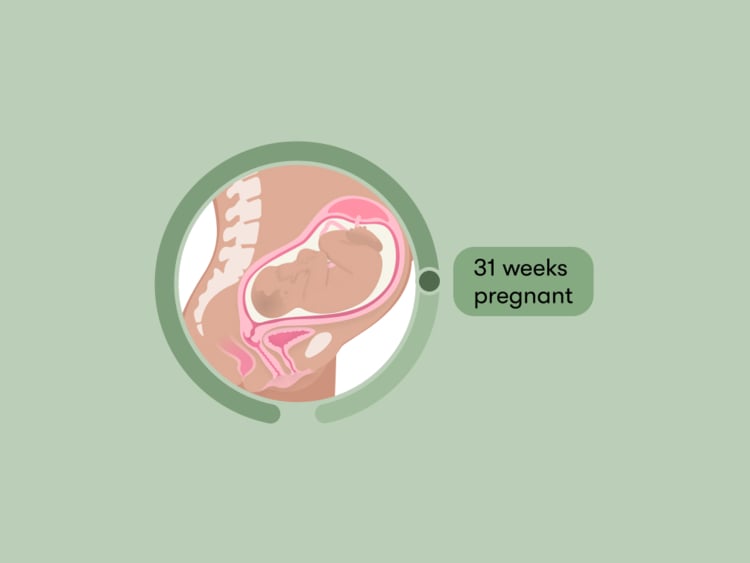

Every piece of content at Flo Health adheres to the highest editorial standards for language, style, and medical accuracy. To learn what we do to deliver the best health and lifestyle insights to you, check out our content review principles.
At 31 weeks pregnant, you’re well into your third trimester, and there’s not much left to go before you welcome your baby into the world. You might be feeling a mix of joy, anxiety, excitement, and … back pain. Your changing body and growing bump may mean that you’re developing new aches and pains, and you may not have been able to see your feet for a little while now. To give you more of an insight into what’s happening at 31 weeks pregnant, here’s the lowdown on some of the possible developments with your body and your baby.
Your baby at 31 weeks pregnant
Baby recognizes voices
You may have seen people reading to their pregnant bump before bed and wondered why you’d do this. Amazingly, by this point in your third trimester, your baby will be able to hear your voice (and the voices of other people around you so long as they’re close to your bump) and may even recognize your voice. If you want your baby to listen to the same music artist as you, grab some headphones, rest them on your bump, and introduce them to your favorite playlist.
Baby looks more baby-like
As you move through your third trimester and your due date is high on your mind, you might be increasingly curious about what your baby will look like when they’re born. While it’s impossible to know for sure until you see them, your baby has gone through monumental changes over the last 31 weeks. While they start out as a bundle of cells and then look a little bit like a shrimp, by 31 weeks, your baby will look increasingly baby-like.
How big is a baby at 31 weeks?
Length (crown to heel): 41.8 cm or 16.5 in
Weight: 1.8 kg or 3.9 lb
Size: Equivalent to a zucchini
All measurements are approximate and vary within the normal range.
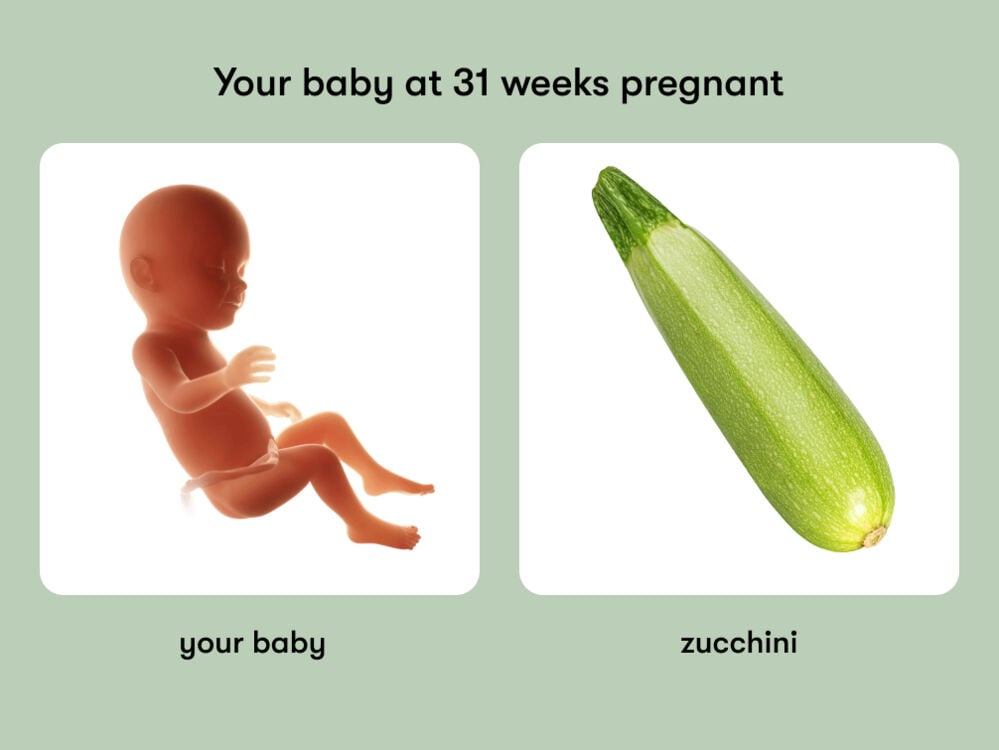
Your body at 31 weeks pregnant
You might experience back, pelvic, and leg pain
At 31 weeks pregnant, back, pelvic, and leg pain can be common and can be caused by a whole range of things. Throughout your second and third trimesters, you gain weight, your hormones relax your ligaments in the joints of your pelvis, and your center of gravity can change as your bump grows. This can put pressure on your lower back and body.
Some people develop pain in their pelvis, which is referred to as pelvic girdle pain. It can feel like pain on one or both sides of your back, over your pubic bone, or between your vagina and anus, and it can feel worse while you’re walking, going up and down stairs, and turning over in bed.
Some people experience pain in their legs due to changes in their body and their growing baby putting extra pressure on the sciatic nerves that run from your lower back down each leg. Your sciatic nerve is the longest nerve in your body (and it’s around two centimeters or 0.7 inches wide) and is made up of a series of nerves that branch out from your spinal cord down your leg to below your knee. You have one sciatic nerve on each side of your body.
If you’re experiencing numbness, tingling, or pain down the back of your legs, in your butt, hips, or lower back, you may be dealing with sciatica. Pregnancy is just one cause of sciatica, and it’s estimated that around 40% of people in the US will experience the condition at some point in their lifetime.
You may start to notice Braxton Hicks contractions
Speaking of new aches and pains, you may start to notice Braxton Hicks contractions. If you’ve been following your pregnancy using Flo’s pregnancy week-by-week guide, then you’ll likely be familiar with Braxton Hicks contractions (or false labor contractions as they’re sometimes referred to) already. They’re your body’s way of practicing for labor and differ from real labor contractions, as real contractions tend to start in the middle of your back and wrap around your abdomen. They also usually last between 30 and 90 seconds and consistently get stronger and closer together.
Braxton Hicks contractions are fairly common and can go away by themselves. If you’ve spent a lot of time sitting or lying still, then going for a walk may help. Similarly, eating or drinking water may get rid of them.
Your questions answered
Are babies fully developed at 31 weeks?
Dr. Marta Perez, obstetrician and gynecologist, assistant professor, Washington University School of Medicine, Missouri, US, explains that while many of your baby’s major organs are developed, they still need to mature in the weeks of your third trimester when your baby will be putting on weight. This is crucial in preparing them for life after birth.
What position is the baby in at 31 weeks?
As your baby grows, you may be curious as to what position they’re in. At 31 weeks, Dr. Perez says, “There is still plenty of room for them to move around.” This means that they may be horizontal across your abdomen, be in the head-down position and ready for labor, or some variation. “They start settling into a position where it’s harder to change closer to 35 weeks,” says Dr. Perez.
What’s the safest earliest time to give birth?
Throughout your third trimester, you may have to make some decisions about the type of labor you’d like to have and determine what your birthing plan might look like. With this in your mind, it’s normal to be curious about when your baby might come and how early is safe. The American College of Obstetricians and Gynecologists defines full-term pregnancy as any time between 39 weeks and 40 weeks and six days. If your baby is born between 37 weeks and 38 weeks and six days, then they’d be considered to be early term.
However, as no two pregnancies are the same, it can be difficult to say when the safest earliest time to give birth is. “There is no one safest time,” explains Dr. Perez. “If you have some pregnancy complications, earlier than 39 weeks could be recommended for you or your baby because risks for specific conditions to the pregnant patient and the fetus increase as pregnancy increases. If there are no complications with the pregnancy, typically 39 weeks is the earliest recommended time for birth.”
Take a quiz
Find out what you can do with our Health Assistant
31 weeks pregnant checklist
Get enough vitamin C and iron
Understanding the vitamins, minerals, and nutrients that can be particularly beneficial during pregnancy can be a little bit of a minefield. Luckily, your doctor, a nutritionist, and apps like Flo can help guide you through.
Vitamin C can be found in broccoli, citrus fruits, and tomatoes, and if you’re taking a prenatal vitamin, then it may be packed with it. It’s crucial in maintaining a robust immune system and helping you to build strong bones. It’s recommended that you get at least 85 mg of vitamin C each day if you are older than 19.
Iron is another nutrient that is crucial during pregnancy. After you conceive, your blood volume increases to support your growing baby, and iron is an important element in your body’s process of making new blood. It’s recommended that you get at least 27 mg of iron per day. This can come from your prenatal vitamin and be supplemented with iron-rich foods like red meat, lentils, cereals, and beans.
Stay hydrated
When you’re pregnant, it’s recommended that you drink eight to 12 cups (64 to 96 ounces) of water every day. This might sound like a little bit of a challenge, but it can have a multitude of benefits, from aiding digestion and keeping constipation at bay to easing Braxton Hicks contractions.
If you find drinking water difficult, then invest in a fun new water bottle. You can buy one with water targets marked throughout the day on it, and you can carry it wherever you go, so you don’t need to keep filling up a glass.
Keep stretching
Managing new pregnancy-related aches and pains can be tough, especially as your bump gets bigger. However, exercise during pregnancy may help to alleviate back pain, ease constipation, and improve your fitness and strength.
If you want to explore some stretches but aren’t totally sure what’s pregnancy-safe, then keep your eye out for prenatal yoga and Pilates. These sessions can help you to focus on your breathing and encourage you to stretch your body while also keeping in mind the positions that are safe for you to do. Before starting any new exercise regime, it can be good to talk it through with your doctor.
Research hospital bag essentials
Now that you’re only nine weeks away from the full-term milestone, you might want to start researching some hospital bag essentials. Whether you’re planning to give birth in a medical setting or at home, it can be good to have items on hand that you think will make your experience the most comfortable. You can use an app like Flo to explore what you might want to include.
When to consult a doctor at 31 weeks pregnant
At 31 weeks pregnant, you may see your doctor every two weeks, but this can differ depending on where you live. “Usually, prenatal care visits move to once every other week at around 28 to 30 weeks,” says Dr. Perez. “Your doctor or midwife is checking in on how you feel as well as checking your blood pressure. They also start to counsel and discuss birth, plans for feeding the baby, and postpartum during these last few weeks of pregnancy.”
Your prenatal appointments can be a great opportunity to ask your doctor any questions, but you don’t need to wait until your appointment if you have any concerns. At 31 weeks pregnant, you should contact your doctor immediately if you experience:
- Severe cramping
- Vaginal bleeding
- Changes in vaginal discharge
- Fever
- Dizziness or fainting
- Severe vomiting
- Severe headaches or blurry vision
- Intense heartburn
- A decrease in the amount you feel your baby move
- A loss of liquid from your vagina or watery/mucus-like discharge (This could be a sign of premature labor.)
This isn’t an exhaustive list and just some examples of changes you should look out for. Some of these can be a sign of health complications, so it’s essential that you speak to your doctor about the best next step for you. And if you’re worried about any other symptoms you experience during pregnancy, then don’t hesitate to reach out to your health care provider.
31 weeks pregnant: The takeaway
As you head into the final stretch of your pregnancy, your baby’s due date, birth plan, and preparations for their arrival may be high on your mind. However, it’s also important to go easy on yourself in these weeks and prioritize your rest and comfort. Prenatal yoga or Pilates may ease some of your aches and pains, and starting to research some hospital bag essentials may make you feel a little more ready.

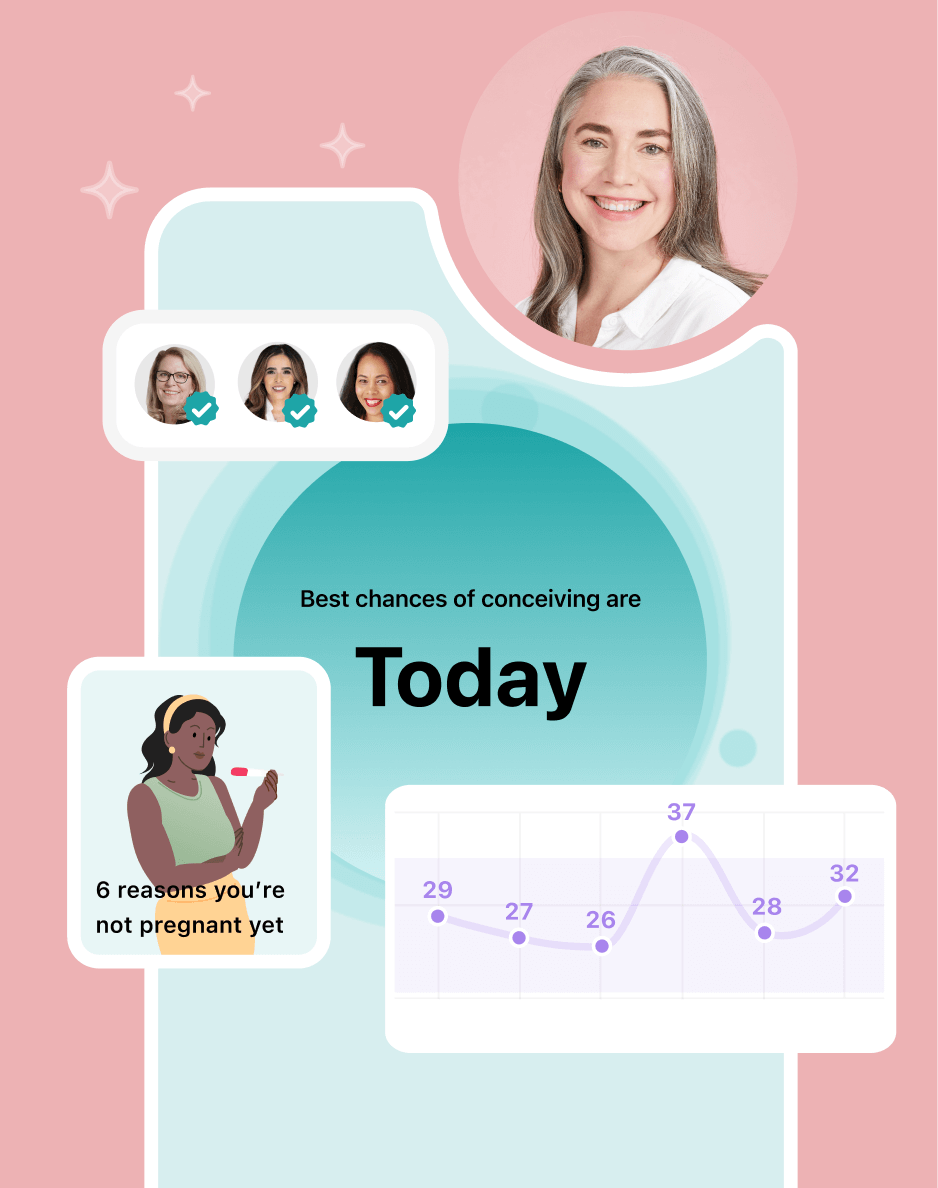
Hey, I'm Anique
I started using Flo app to track my period and ovulation because we wanted to have a baby.
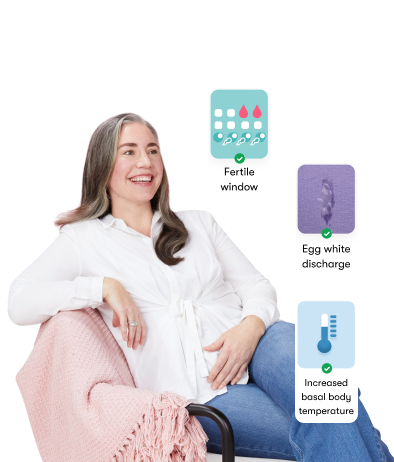
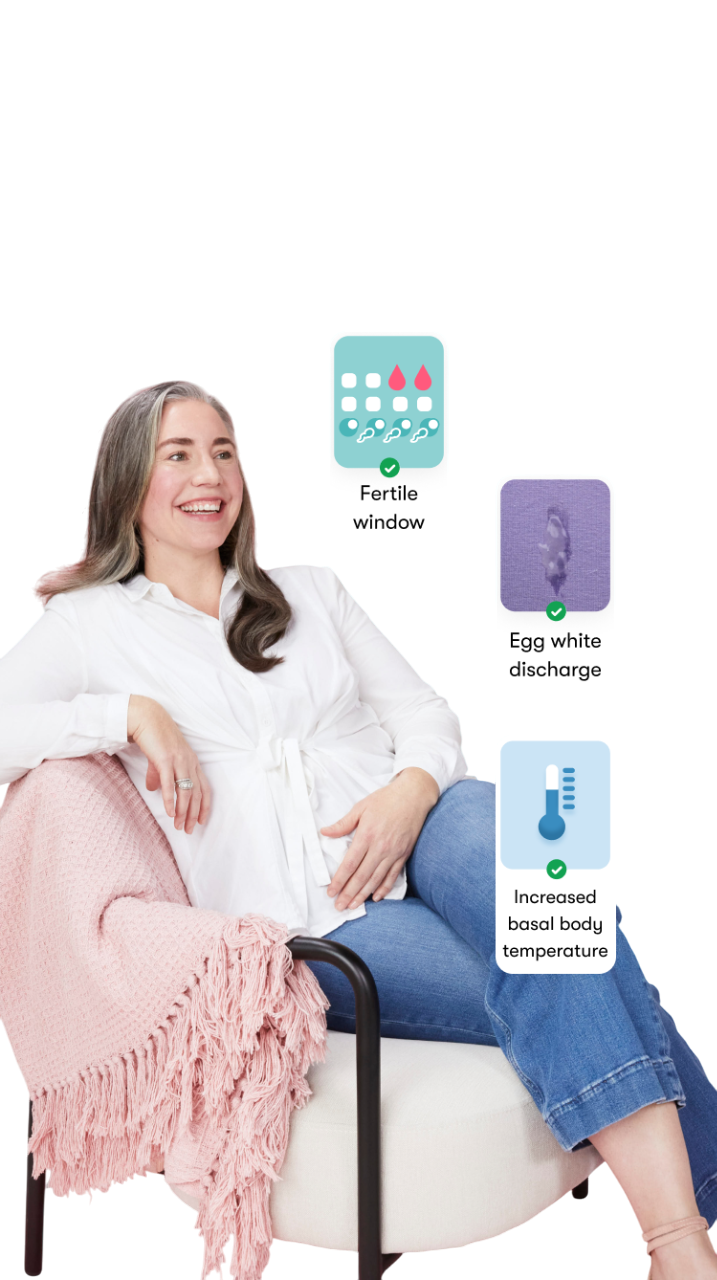
The Flo app helped me learn about my body and spot ovulation signs during our conception journey.
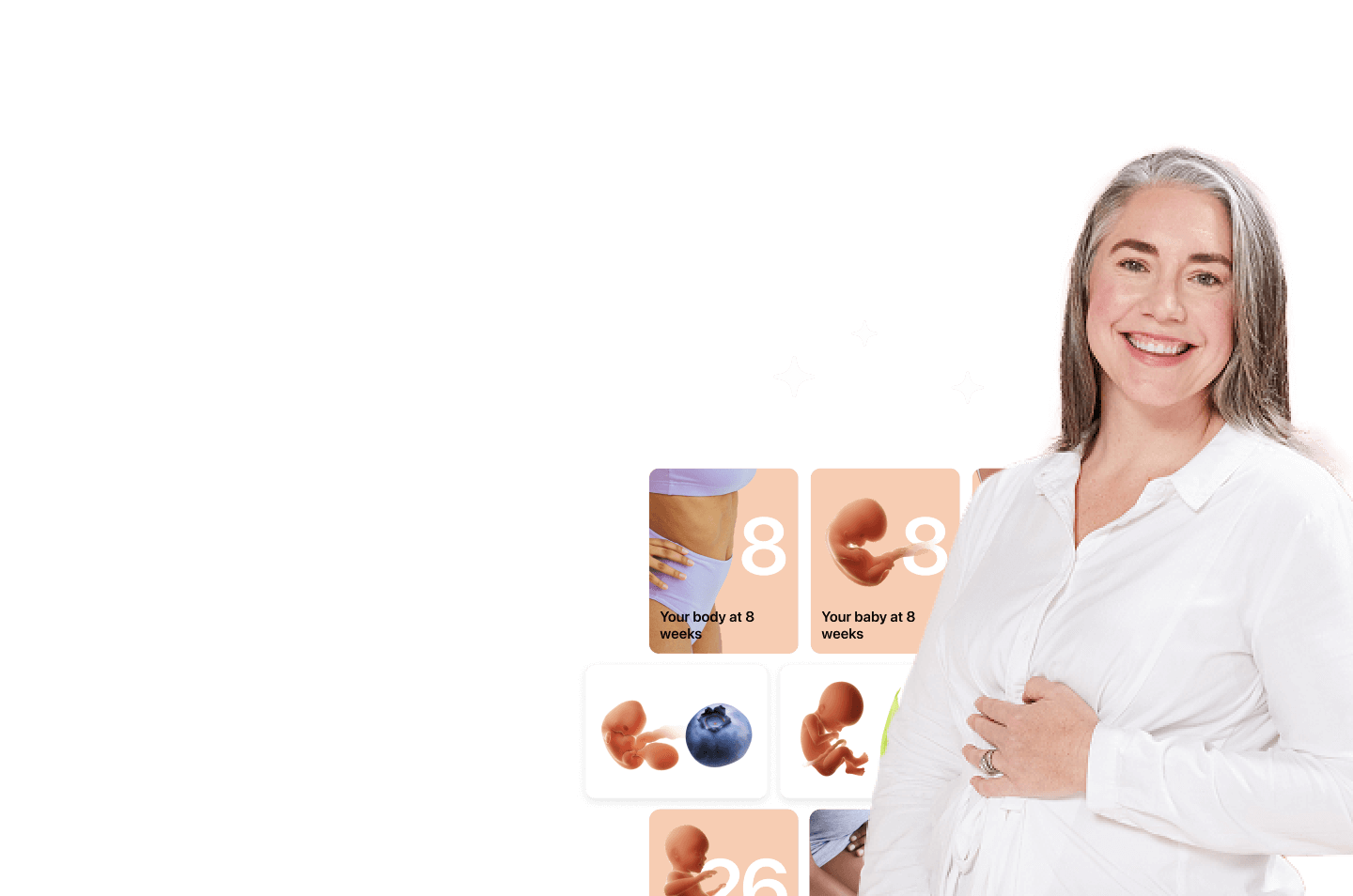
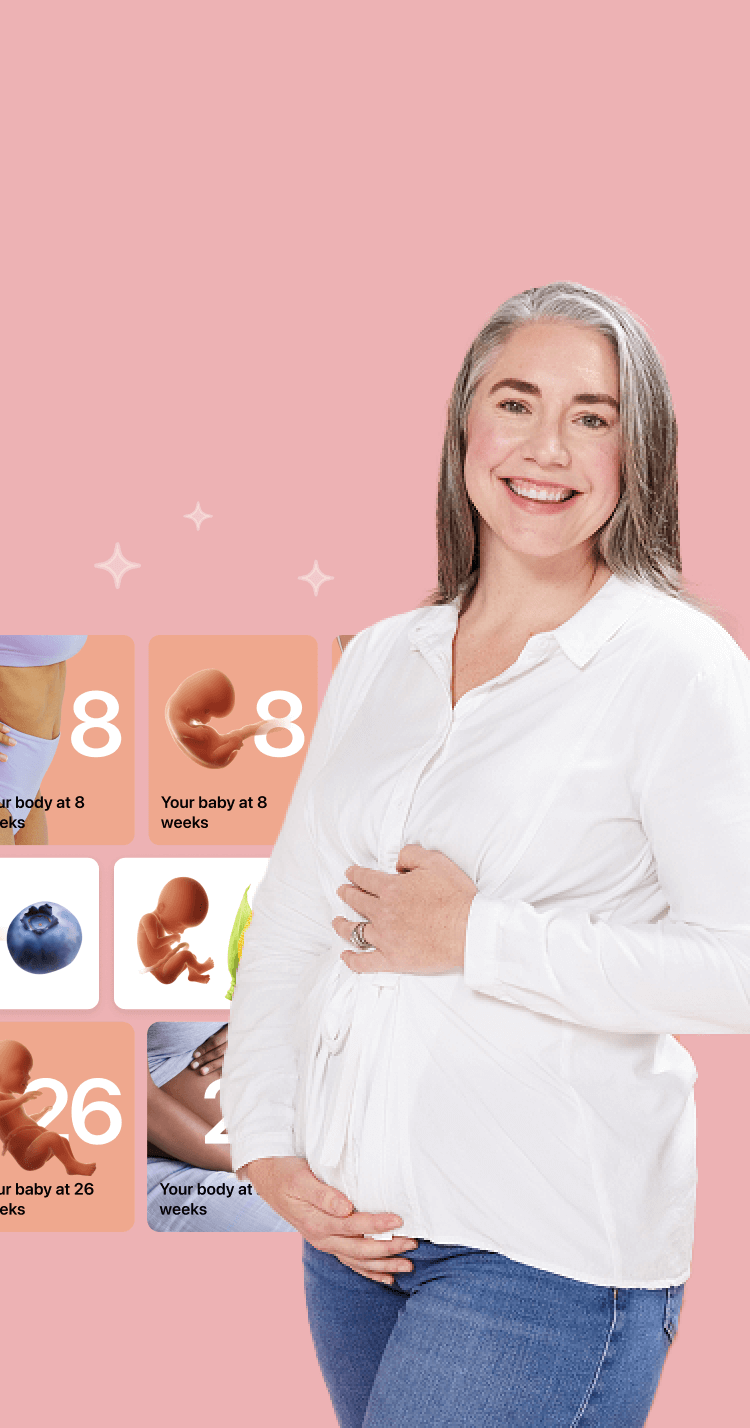
I vividly
remember the day
that we switched
Flo into
Pregnancy Mode — it was
such a special
moment.
Real stories, real results
Learn how the Flo app became an amazing cheerleader for us on our conception journey.
References
“3rd Trimester Pregnancy: What to Expect.” Mayo Clinic, 9 Mar. 2022, www.mayoclinic.org/healthy-lifestyle/pregnancy-week-by-week/in-depth/pregnancy/art-20046767.
“Back Pain during Pregnancy: 7 Tips for Relief.” Mayo Clinic, 20 Nov. 2021, www.mayoclinic.org/healthy-lifestyle/pregnancy-week-by-week/in-depth/pregnancy/art-20046080.
“Exercise during Pregnancy.” The American College of Obstetricians and Gynecologists, Mar. 2022, www.acog.org/womens-health/faqs/exercise-during-pregnancy.
“Nutrition during Pregnancy.” The American College of Obstetricians and Gynecologists, June 2023, www.acog.org/womens-health/faqs/nutrition-during-pregnancy.
“Fetal Development.” Perinatology.com, perinatology.com/Reference/Fetal%20development.htm. Accessed 20 July 2023.
“Fetal Development.” Cleveland Clinic, my.clevelandclinic.org/health/articles/7247-fetal-development-stages-of-growth. Accessed 20 July 2023.
“How Much Water Should I Drink during Pregnancy?” The American College of Obstetricians and Gynecologists, Oct. 2020, www.acog.org/womens-health/experts-and-stories/ask-acog/how-much-water-should-i-drink-during-pregnancy.
“How to Tell When Labor Begins.” The American College of Obstetricians and Gynecologists, May 2020, www.acog.org/womens-health/faqs/how-to-tell-when-labor-begins.
“How Your Fetus Grows during Pregnancy.” The American College of Obstetricians and Gynecologists, Aug. 2020, www.acog.org/womens-health/faqs/how-your-fetus-grows-during-pregnancy.
Katonis, P., et al. “Pregnancy-Related Low Back Pain.” Hippokratia, vol. 15, no. 3, July–Sep. 2011, pp. 205–10, www.ncbi.nlm.nih.gov/pmc/articles/PMC3306025/.
Nicholson, James M., et al. “New Definition of Term Pregnancy.” JAMA, vol. 310, no. 18, 13 Nov. 2013, pp. 1985–86, jamanetwork.com/journals/jama/article-abstract/1769878.
Raines, Deborah A., and Danielle B. Cooper. “Braxton Hicks Contractions.” StatPearls, StatPearls Publishing, 2022, www.ncbi.nlm.nih.gov/books/NBK470546/.
Reynolds, S.R. “The Uses of Braxton Hicks Contractions.” Obstetrics and Gynecology, vol. 32, no. 1, July 1968, pp. 134–40, pubmed.ncbi.nlm.nih.gov/4911908/.
“Sciatica.” Cleveland Clinic, my.clevelandclinic.org/health/diseases/12792-sciatica. Accessed 20 July 2023.
Sward, Lindsey, et al. “Pelvic Girdle Pain in Pregnancy: A Review.” Obstetrical and Gynecological Survey, vol. 78, no. 6, June 2023, pp. 349–57, journals.lww.com/obgynsurvey/Abstract/2023/06000/Pelvic_Girdle_Pain_in_Pregnancy__A_Review.18.aspx.
“The Third Trimester.” Johns Hopkins Medicine, 8 Aug. 2021, www.hopkinsmedicine.org/health/wellness-and-prevention/the-third-trimester.
“Third Trimester.” St. Mary’s Regional Medical Center, www.stmarysregional.com/services/women/birthplace/third-trimester. Accessed 20 July 2023.
“Pregnancy: Types of Delivery.” Cleveland Clinic, my.clevelandclinic.org/health/articles/9675-pregnancy-types-of-delivery. Accessed 20 July 2023.
“Pelvic Pain in Pregnancy.” NHS, www.nhs.uk/pregnancy/related-conditions/common-symptoms/pelvic-pain/. Accessed 20 July 2023.
“Vitamins, Supplements and Nutrition in Pregnancy.” NHS, www.nhs.uk/pregnancy/keeping-well/vitamins-supplements-and-nutrition/. Accessed 20 July 2023.
“Pregnant? Here’s How Often You’ll Likely See Your Doctor.” Cleveland Clinic, 14 Jan. 2022, health.clevelandclinic.org/prenatal-appointment-schedule/.
“Urgent Maternal Warning Signs.” Centers for Disease Control and Prevention, www.cdc.gov/hearher/maternal-warning-signs/index.html. Accessed 13 July 2023.
“Bleeding during Pregnancy.” The American College of Obstetricians and Gynecologists, May 2021, www.acog.org/womens-health/faqs/bleeding-during-pregnancy.
“Vaginal Discharge in Pregnancy.” NHS, www.nhs.uk/pregnancy/related-conditions/common-symptoms/vaginal-discharge/. Accessed 14 June 2023.
Friel, Lara A. “Fevers during Pregnancy.” MSD Manual Consumer Version, Sep. 2022, www.msdmanuals.com/home/women-s-health-issues/pregnancy-complicated-by-disease/fevers-during-pregnancy.
“Morning Sickness: Nausea and Vomiting of Pregnancy.” The American College of Obstetricians and Gynecologists, May 2020, www.acog.org/womens-health/faqs/morning-sickness-nausea-and-vomiting-of-pregnancy.
“Heartburn during Pregnancy.” Cleveland Clinic, my.clevelandclinic.org/health/diseases/12011-heartburn-during-pregnancy. Accessed 14 June 2023.
“Preterm Labor.” Mayo Clinic, 8 Feb. 2022, www.mayoclinic.org/diseases-conditions/preterm-labor/symptoms-causes/syc-20376842.
History of updates
Current version (18 August 2023)
Published (24 February 2019)
In this article
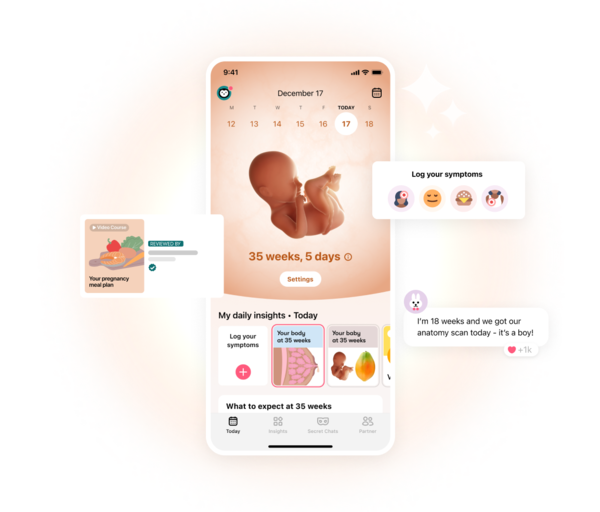
Get your personal guide to pregnancy with the Flo app
-
Follow your baby's growth week by week
-
Get expert info on symptoms, safe foods, and more
-
Chat with other parents-to-be




